A ‘Monumental’ exhibit of Alexander Calder’s works at Denver Botanic Gardens
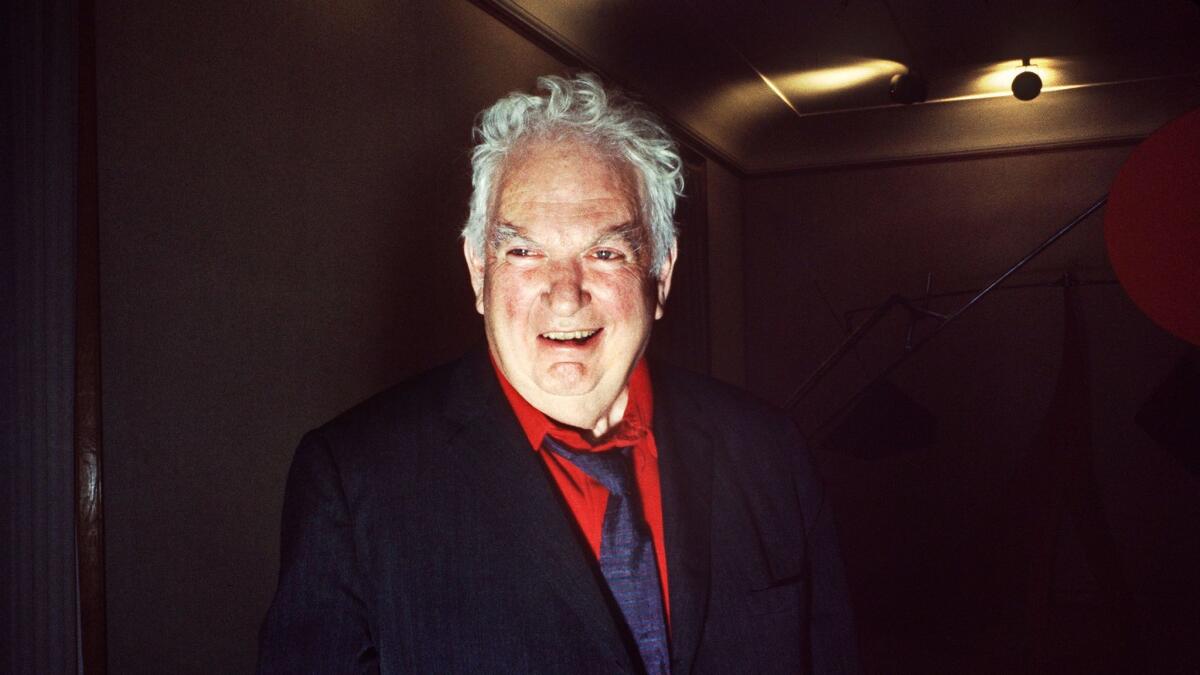
- Share via
The large-scale sculptures of iconic American artist Alexander Calder are making special magic through the end of the summer at the Denver Botanic Gardens.
On view through Sept. 24, “Calder: Monumental” is on display at the gardens’ York Street location and will not travel, making the exhibition unique.
Most of the sculptures are stabiles — which do not move and are made of bolted steel plate — but a few feature a mobile structure that sways at their top, creating a “standing mobile.”
The works, created during the last 20 years of Calder’s life, from 1956 to 1976, represent a microcosm of Modernism, with elements of Cubism, Surrealism, Abstract Expressionism and kinetic art.
Alexander S.C. Rower, president of the Calder Foundation in New York, which helped organize the exhibition and has lent five of the its nine works, said there has never been a show of outdoor sculptures like Denver’s.
Displaying the works in the gardens creates “color, counterpoint, such richness,” Rower said, calling this “the exciting part for me, personally.”
Artists other than Calder were responsible for the terms now used to describe many of his works. Marcel Duchamp came up with the term “mobile” on a 1931 visit to Calder’s studio, where Calder was working on a motorized panel; artist Hans Arp coined the term “stabile” the next year.
“Calder: Monumental” was guest-curated by Alfred Pacquement, honorary director of the Musée National d’Art Moderne, Centre Pompidou in Paris, and president of the Atelier Calder, an artists’ residency program in central France. There will also be a series of lectures, guided tours by curators and docents, and drawing and photography classes.
Admission to the exhibition is free, beyond the gardens’ entrance fee, though there will be additional charges for these activities.
As you peruse the works, you’ll see Calder’s sense of playfulness and his humor that, coupled with a keen intellect and his education as a mechanical engineer, combined to create a timeless and immense (estimated at 22,000 pieces) body of work.
Calder, a native of Lawnton, Pa., the son and grandson of artists, died at age 78.
Here is a look at some of the works in this exhibit.
‘Six Dots Over a Mountain’
This standing mobile, from the collection of the Hirshhorn Museum and Sculpture Garden in Washington, was made by Calder in 1956 and is one of his earliest monumental outdoor sculptures.
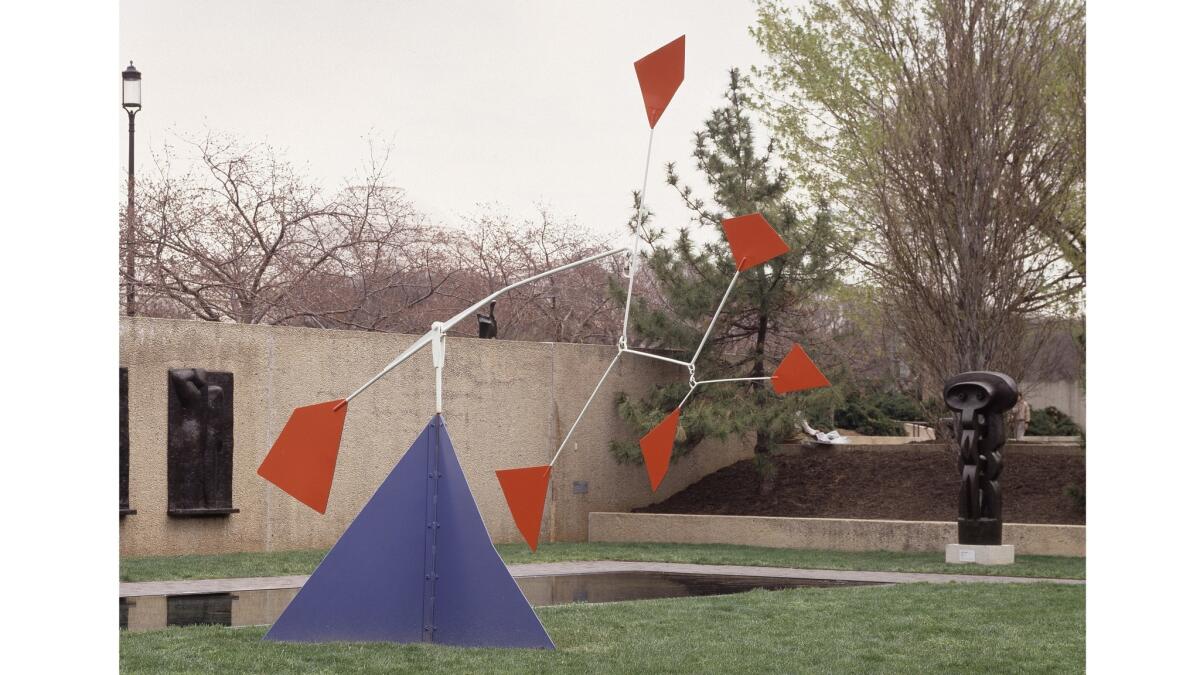
‘Five Rudders’
This standing mobile, from the collection of the Mildred Lane Kemper Art Museum in St. Louis, was made in 1964.
Calder’s sculptures evolved over time from smaller domestic and garden commissions to larger, welded works that he began creating in the 1950s with the help of ironworkers.
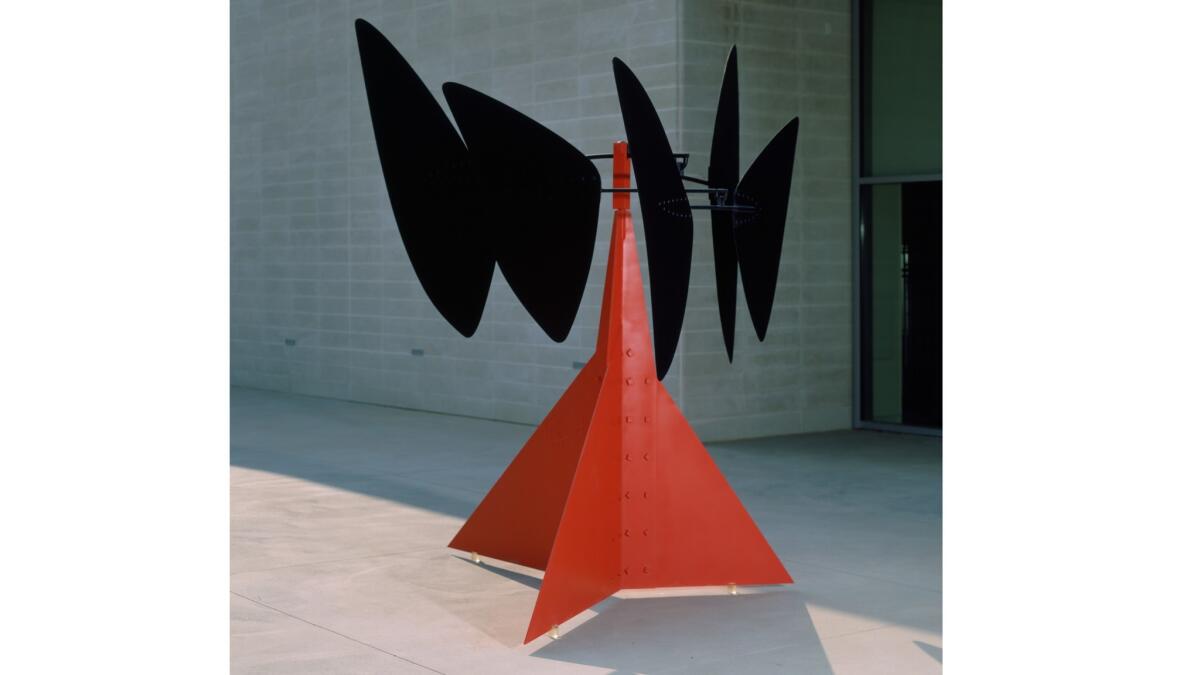
‘Polygons on Triangles’
According to Rower, Calder’s grandson and president of the Calder Foundation, owner of this 1963 stabile, the names of Calder’s sculptures usually do not represent anything specific but rather reflect the way they are inventoried.
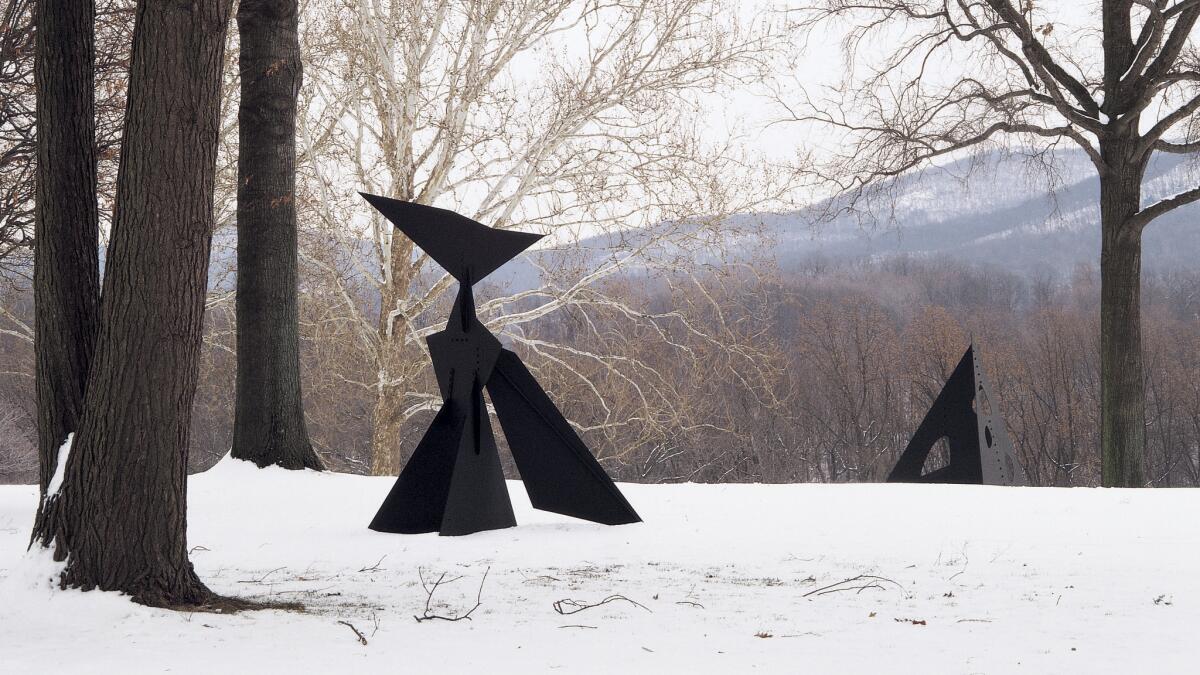
‘The Crab’
Pointing to the contrasting features of this 1962 stabile from the collection of the Museum of Fine Arts, Houston — “the heaviness of one aspect of it and the linear quality of its legs” — Rower said his grandfather came up with the title after he created it.
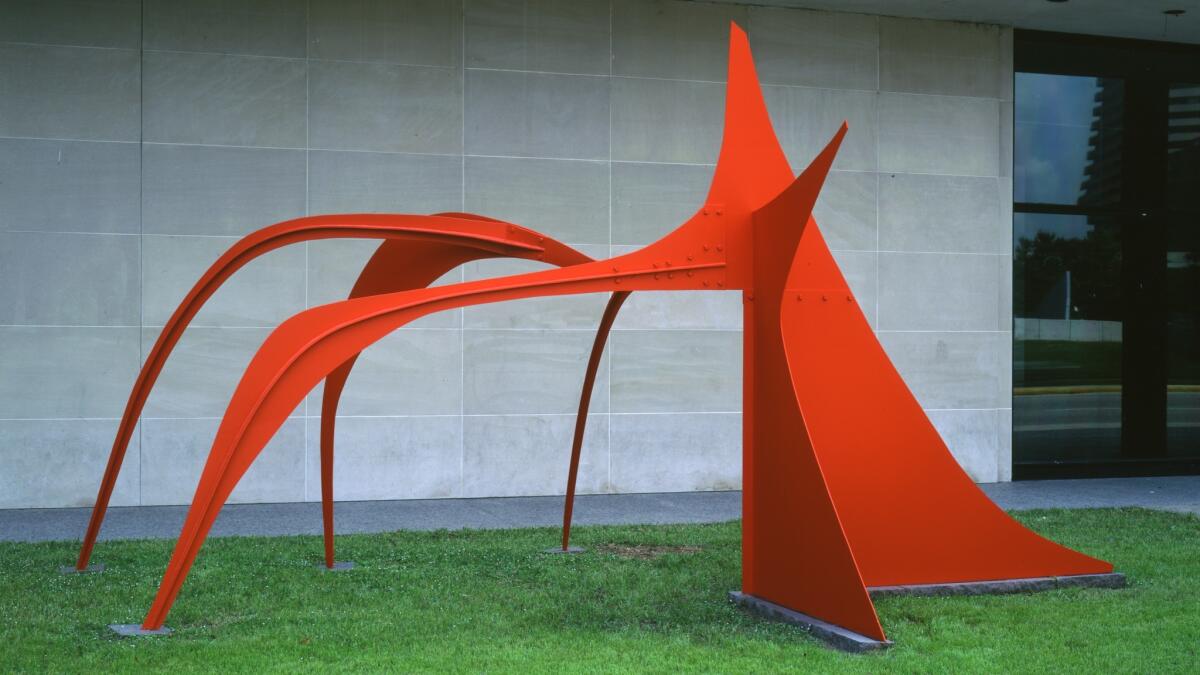
‘Tripes’
This 1974 stabile is one of the oldest sculptures in the exhibition and also the biggest, in terms of height and bulk. It stands more than 12 feet tall and is owned by the Calder Foundation.
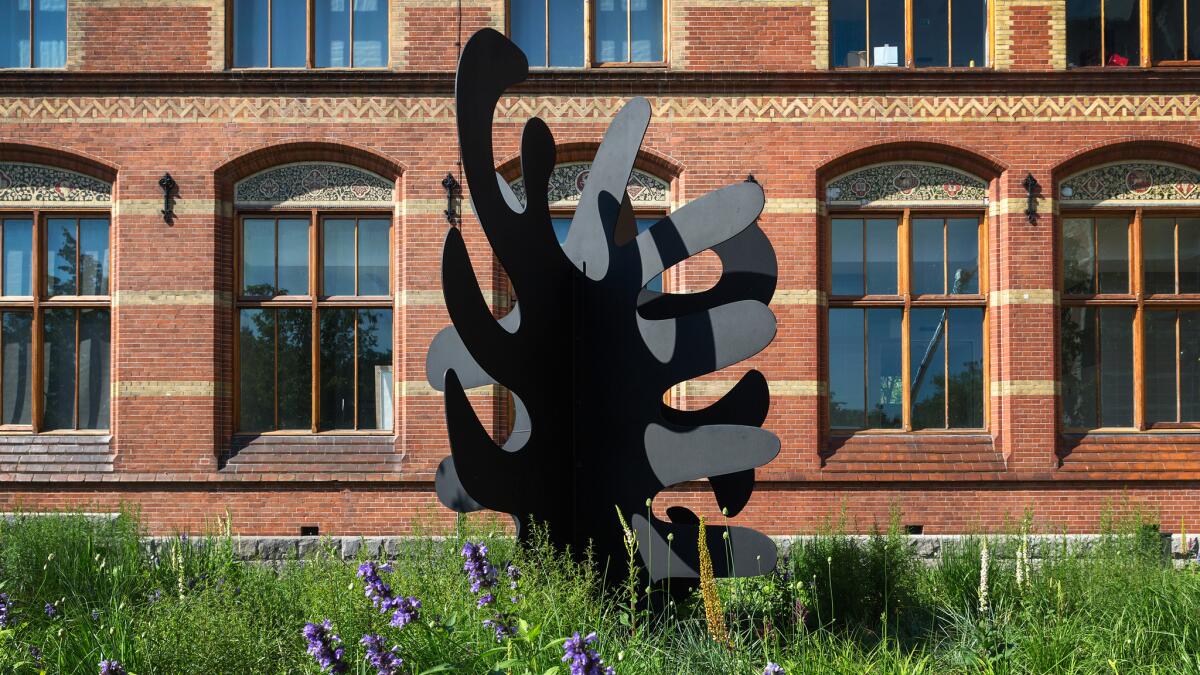
‘A Two-Faced Guy’
This 1969 stabile, from the Calder Foundation, features two heads, one red, one black, one with spiky hair and the other bald.

‘Untitled’
This 1976 stabile from the Calder Foundation is the sculptor’s final work in his “Critters” series.
Rower calls it “fantasy” that is not sexual, though it combines breasts, high heels and a bald head.
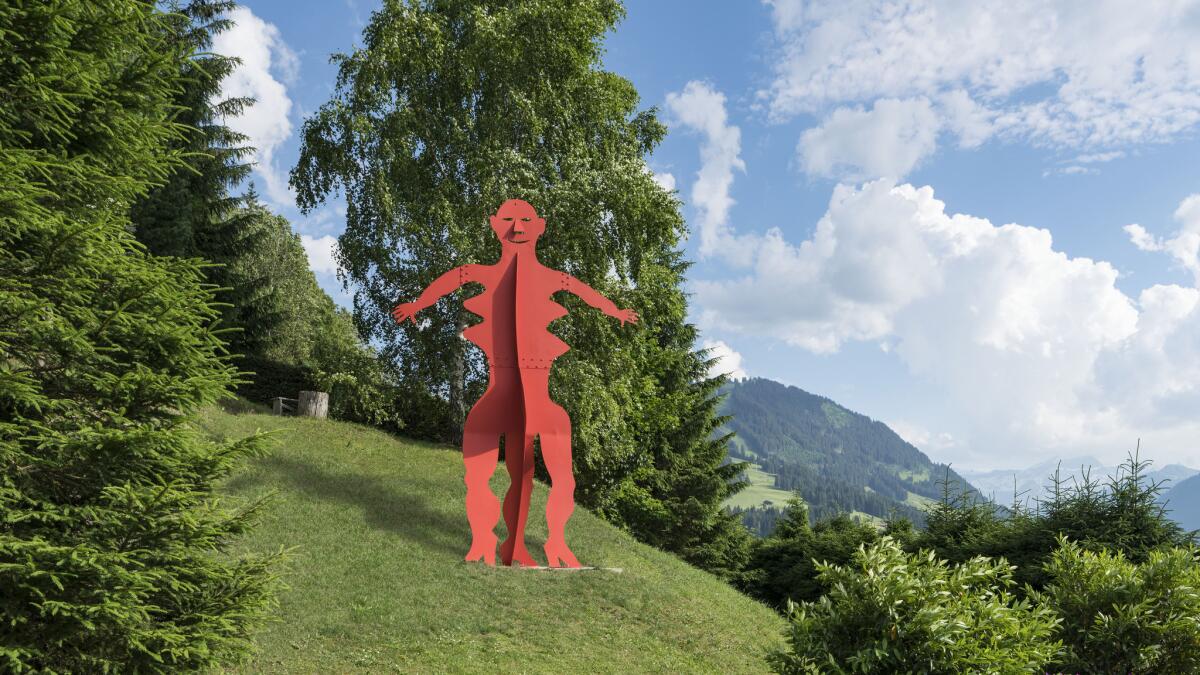
Sign up for The Wild
We’ll help you find the best places to hike, bike and run, as well as the perfect silent spots for meditation and yoga.
You may occasionally receive promotional content from the Los Angeles Times.



